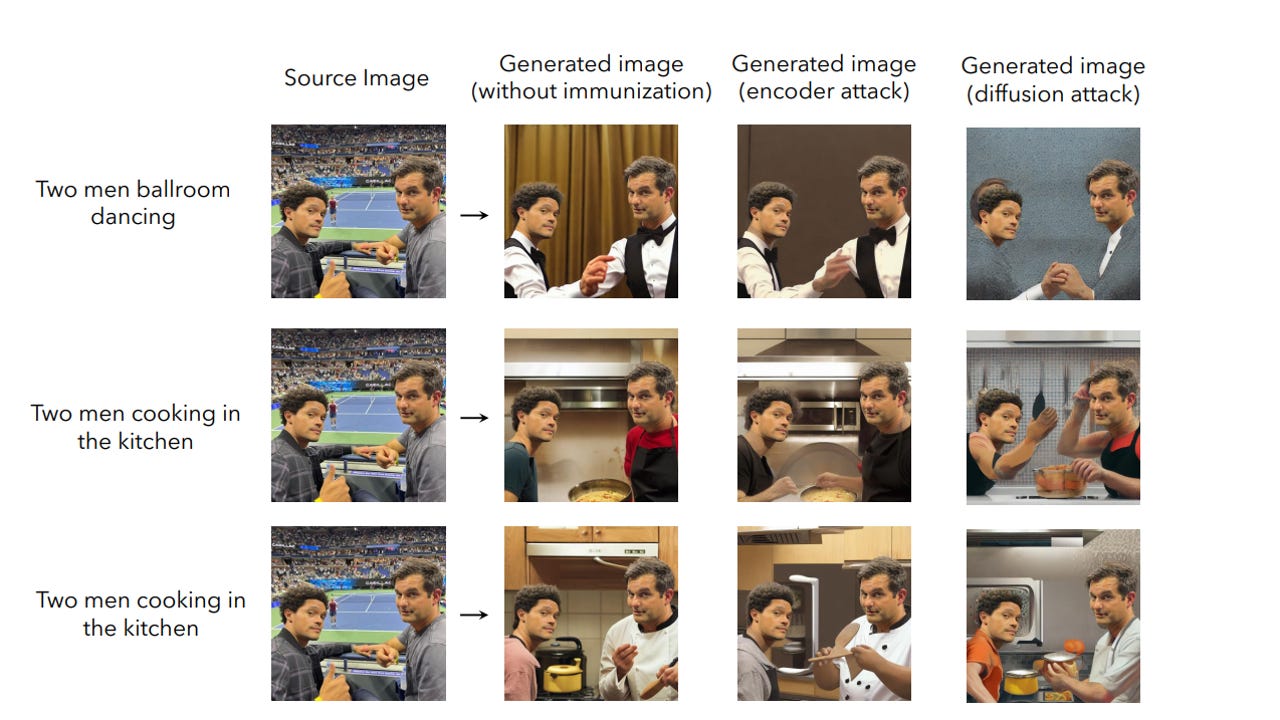This MIT team is fighting malicious AI image manipulation a few pixels at a time

As AI image creation and editing becomes more prevalent, a new digital privacy concern has arisen -- the unauthorized AI editing of someone's artwork or picture. To date, there's nothing to stop someone from taking a picture online, uploading it to an AI program, and manipulating it for all sorts of purposes.
But a new technique from a team at MIT could change that.
Also: The best AI image generators to try
Simply called "PhotoGuard," the method involves a deep understanding of the algorithms that AI operates on. With that understanding, the team developed ways to very subtly change a picture, disrupting how AI interprets it. And if AI can't understand an image, it can't edit it.
"At the core of our approach," the MIT team explained in a paper on their project, "is the idea of image immunization -- that is, making a specific image resistant to AI-powered manipulation by adding a carefully crafted (imperceptible) perturbation to it."
PhotoGuard works by altering a few select pixels in each image in such a way that AI sees things that aren't there. These changes aren't visible to the human eye, but they're blindingly bright to AI. When the AI sees the edited pixels, it overestimates their importance and edits the image to those pixels instead of the rest of the image.
Also: How to use ChatGPT: Everything you need to know
To test their results, the MIT team took 60 images and generated AI edits using various prompts -- both on immunized and non-immunized versions of the same image. Once the new image was created, they used several metrics to determine how similar the edits were. The end result? In a test of 60 images, the team found that edits of immunized images were "noticeably different from those of non-immunized images."
Of course, the method isn't foolproof. If someone wanted badly enough, they could still maliciously edit an image -- perhaps by cropping a photo until they cut out the pixel causing trouble or by simply applying a filter to the image. Still, this presents a significant hurdle that could deter a lot of people.
And while this method is effective against this generation of AI, that doesn't necessarily mean it will be in the future. That's why PhotoGuard creators encourage growth in this area not just through technical methods, but through "collaboration between organizations that develop large diffusion models, end-users, as well as data hosting and dissemination platforms."
Also: Generative AI is coming for your job. Here are 4 reasons to get excited
Right now, PhotoGuard is simply a technique. There's no software available to the public, and the creator admits that there's a lot of work to do for this to be practical and available to the general public. Still, this is a step forward to guard against new threats from AI, the MIT team says, and a sign that companies need to invest in the fight.
